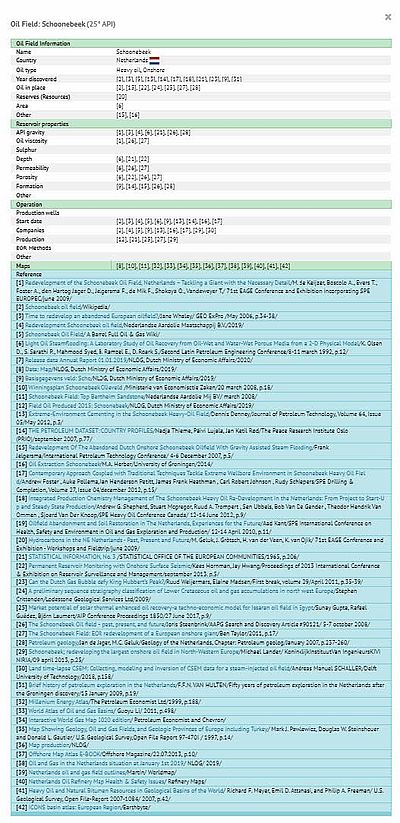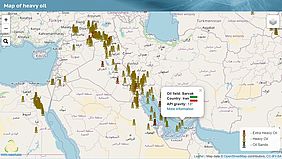Despite the obvious oversupply of oil on world markets, it is too early to talk about excluding this resource from the things that define the modern energy. The share of oil in global primary consumption exceeds 30%, and a significant change in this ratio in the next two decades is unlikely to be expected. Moreover, a decrease in investments in geological exploration on the one hand and an increase in the share of hard-to-recover oil in production may very soon lead to a shortage of oil on world markets. In the last twenty years, the increase in oil reserves, exceeding production, has been seen mainly in the case of heavy oil, bituminous and shale oil. In addition, a significant number of active fields are rapidly depleting, and the remaining oil becomes hard-to-recover. All this predetermines a great interest in the newest development of the exploration and production of heavy oil and its other types.
The creative association Advanced Energy Technologies has developed an interactive map of heavy oil, which gives users the opportunity to see more than 1,500 fields around the world and get online access to a library of scientific articles, technical reports, news and other information on each of them, containing about 30,000 links. The main selection criterion was the upper value of the oil density in the fields - no more than 25 degrees API; therefore, the map included some fields that do not normally belong to the heavy oil group, classified as hard-to-recover oil, but which require advanced extraction technologies similar to those for heavy oil production.
In total, the map shows oil fields in more than 50 countries, including about 100 oil fields in the United States, several dozen in Mexico and Canada, as well as about 30 in the Canadian province of Alberta alone. More than 250 oil fields are situated in South America (about 90 in Venezuela and about 40 in Colombia, around 60 in Ecuador, almost 30 in Brazil, etc). In the countries of the Middle East, the oil fields can be found in Iraq, Iran, Saudi Arabia, Kuwait, Qatar, Oman and other countries of the region. Africa is best represented by oil fields of Egypt, Angola, Nigeria. Extensive information is available for Russia (over 130 fields), China (over 70 fields), Kazakhstan (over 50 fields) and Indonesia (almost 35 fields). In addition, the oil fields of many European countries, Central America, countries of the former USSR, India, Australia and others are depicted on the map.
To access the library, just click on the corresponding icon and with the second click in the drop-down window request a list of active links. The information selected will display, if possible, such data as oil in place reserves (resources), area, reservoir properties, including API gravity, oil viscosity, sulphur, permeability, porosity, as well as information on oil production, including, production wells, start date, companies, production, EOR Methods.
The general view of the drop-down table of the fields library is as follows:
The information on the map may be useful to specialists studying the resources and methods of unconventional oil production, students and teachers, investors, journalists, and analysts.
